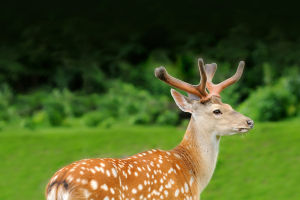Rhinos - what's not to love about them? Otherwise known as the 'curvy unicorn'. They are big and amazing herbivores, whom when left to be free, can live up to 40 years in the wild. Although being large and heavy animals, they are pretty quick on their feet and can hit speeds of 35-40 miles per hour. Here are 9 Rhino facts that will make you love them even more!
1. THERE ARE 5 SPECIES OF RHINO IN THE WORLD
These include two African rhino species - black and white rhinos. The remaining three are Asian rhino species, which include greater one–horned, Sumatran and Javan rhinos. The Sumatran, Javan and Black rhinos are listed as ‘critically endangered’ by the IUCN - there are thought to be fewer than 70 Javan and 100 Sumatran rhinos left, which makes them truly under threat of extinction in the wild. The white rhino is classified as 'near threatened’ with around 10,000 individuals, whereas the greater one-horned rhino is currently vulnerable in the wild.
2. RHINOS CAN WEIGH OVER 3 TONNES
Sumatran rhinos are the smallest of all rhinos, but they can still weigh 600kg (that’s almost 95 stone). On the other hand, white rhinos are the largest of the rhino species, weighing up to 3,500 kg. That is more than 550 stones, or well over 3 tonnes, which is mighty impressive considering they mainly eat grass and leaves.
3. BLACK AND WHITE RHINOS ARE BOTH, IN FACT, GREY
The names of black and white rhinos are misleading – as both are actually grey. The white rhino is said to have gotten its name from the Afrikaans word for wide (‘wyd’), referring to its wide, square lip (in contrast, black rhinos have a pointy upper lip). Early English explorers mistook this word for ‘white’ and consequently named this species ‘white’ rhino, and the other ‘black’ rhino to differentiate.
4. THEY’RE CALLED BULLS AND COWS
Male rhinos are called 'bulls' and females are called 'cows'. Their young are ‘calves’. Females tend to be more sociable than the more solitary, territorial males. Together, a group of rhinos is called a ‘crash’.
5. WHAT ARE RHINO HORNS MADE OF? THE SAME STUFF AS OUR FINGERNAILS
Rhino horn is made up of keratin - the same protein which forms the basis of our hair and nails. Javan and greater one-horned rhinos only have one horn, whereas all the other rhino species have two horns. Their horns grow continuously during their lifetime – the white rhino's horn can grow 7cm every year – and the record length is 150cm long!
6. RHINOS HAVE POOR VISION
Rhinos’ eyesight isn’t great – they’re unable to see a motionless person at a distance of 30m – they mainly rely on their strong sense of smell.
7. JAVAN RHINOS ARE ONLY FOUND IN ONE SMALL PLACE
Ujung Kulon National Park – a World Heritage Site – is home to the last remaining wild Javan rhinos on Earth. But this is a precarious place to live. An active volcano is just 50km away. And a tsunami as high as 10m – which is projected to occur within the next 100 years – could threaten 80% of the rhinos’ territory in Ujung Kulon National Park. That's why establishing a safe site for another population of Javan rhinos in Indonesia is a priority.
8. THEY COMMUNICATE THROUGH HONKS, SNEEZES…AND POO
Rhinos make an array of funny noises when they’re communicating. During confrontations, they growl and make 'trumpet calls'. Black rhinos snort when they’re angry, make sneeze-like calls as alarms, scream if they’re scared and ‘mmwonk' when relaxed. Rhinos also communicate through their poo and urine. When rhino poo in the same place as other rhinos – an area known as a latrine – they can smell the poo and urine of other individuals and know who's in the area.
9. THEY LOVE MUD
Rhinos can often be seen rolling around in mud, giving themselves a protective 'mud coat’ to keep them cool, stop insects biting and get rid of any parasites. Asian rhinos are also excellent swimmers, crossing rivers with ease. But their African relatives are very poor swimmers and can drown in deep water – so they stick to wallowing in mud for a cool-down.


